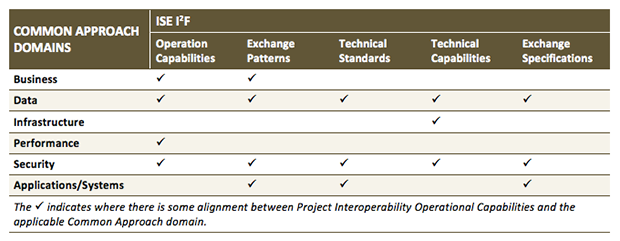ODNI builds toolbox for information interoperability


Connecting state and local government leaders
Project Interoperability aims to be architecture agnostic, working toward a connected government by normalizing the way information-sharing technology is developed.
An information-sharing project recently launched by the Office of the Director of National Intelligence aims to develop a set of tools that would make it easier for government agencies at all levels, as well as private sector organizations, to move data between existing networks and systems.
The intent is have Project Interoperability be “architecture agnostic,” the ODNI said, and to achieve a connected government by normalizing the way information sharing technology is developed. ODNI also wants the project to be a community-led endeavor, and recently moved the project site to GitHub where potential users can view, comment on, add to and make changes to the tools, similar to an open source process.
The site currently lists 10 of what ODNI calls the top tools for building information interoperability, along with several use cases that provide examples for how the tools and standards the project is developing can help organizations improve interoperability.
“We’re taking the long view on this,” said Michael Kennedy, director for Architecture and Interoperability at the ODNI. “We see it as a living project that can change in real-time as requirements and customer needs change.”
The structure of Project Interoperability has evolved from where it started some 30 months ago, he said. The goal was always for it to act as the “white space” between information frameworks that existed in agencies and other organizations and to help link those. As the project got closer to the finish, the various tools emerged as very technical in nature.
“But we found we had several audiences we needed to cater to,” Kennedy said. “There weren’t just the technical experts, but also agency executives and managers and the technically dumb. So we had to make Project Interoperability appropriate for all the various levels of practitioners.”
Two of the most well-developed tools--one for Architecture Alignment and a Maturity Model--can be used as guidelines to give organizations a general understanding of where they are with interoperability But they also allow agencies to drill down and pull out specific technical information they’ll need to make their networks and data systems more interoperable.
The Architecture Alignment tool would be used to create interoperability between different enterprise architecture frameworks. It describes the interoperability needs, requirements and alignment for the various domains — business, data, performance, security, infrastructure, applications and systems — included in the Office of Management and Budget’s Common Approach to Federal Enterprise Architecture.
Interoperability is achieved when organizations can show that the requirements for each of those domains clearly provide for the appropriate attributes for data, exchange mechanisms and/or services.

Likewise, the Maturity Model gives a way for agencies to evaluate their mission reference architecture and the interoperability artifacts it contains against what’s required by the federal government’s Information Sharing Environment maturity model. The more items IT managers can tick off as compliant with the ISE model, then the more interoperable they are. They’ll also be able to see what they need to do to improve their interoperability.
Other tools in the project’s toolbox are in various stages of development, but include reference architecture templates and a portfolio of services and processes agencies can use to provide identity management, authentication and authorization.
If agencies use these tools, Kennedy said, then interoperability will inevitably develop as they build-in attribute change capabilities into their systems and processes, along with identity and access management. They’ll then be able to “responsibly” share information, he said.
“It’s not our intention to force this on anyone, and organizations are free to choose to use anywhere between all or none of these tools,” he said. “Each tool will provide for a different level of interoperability. What we are saying is that the more you choose to use, the more likely your systems will be interoperable.”





